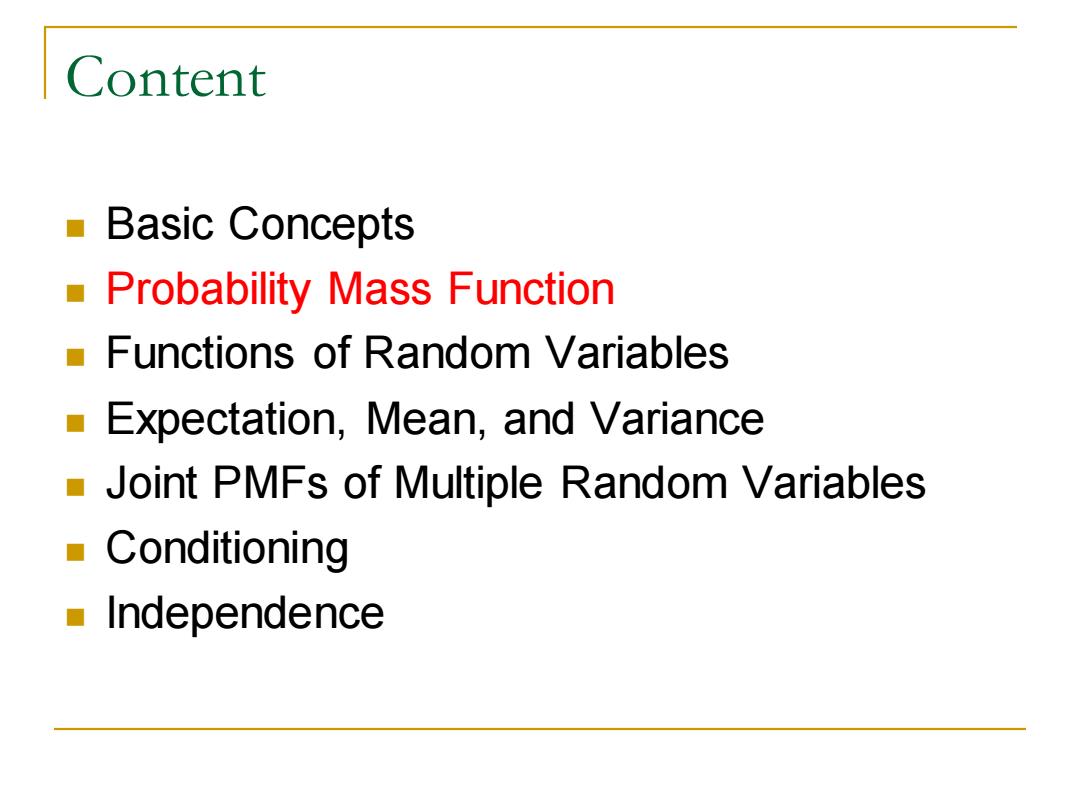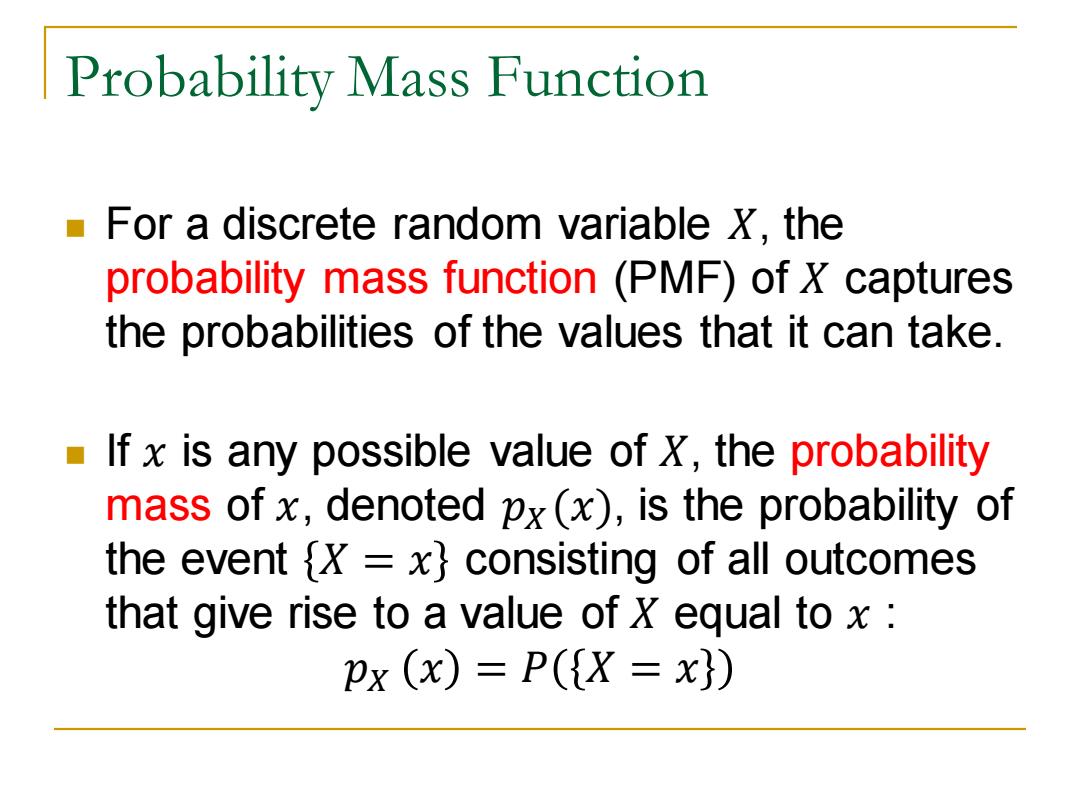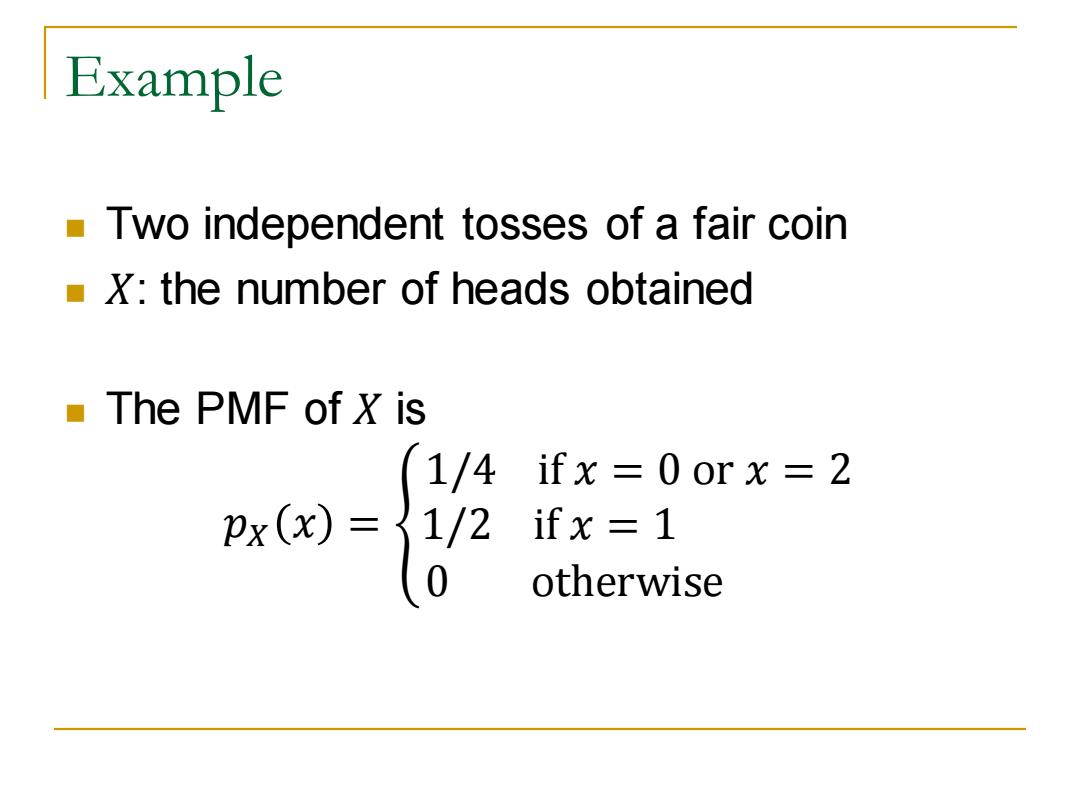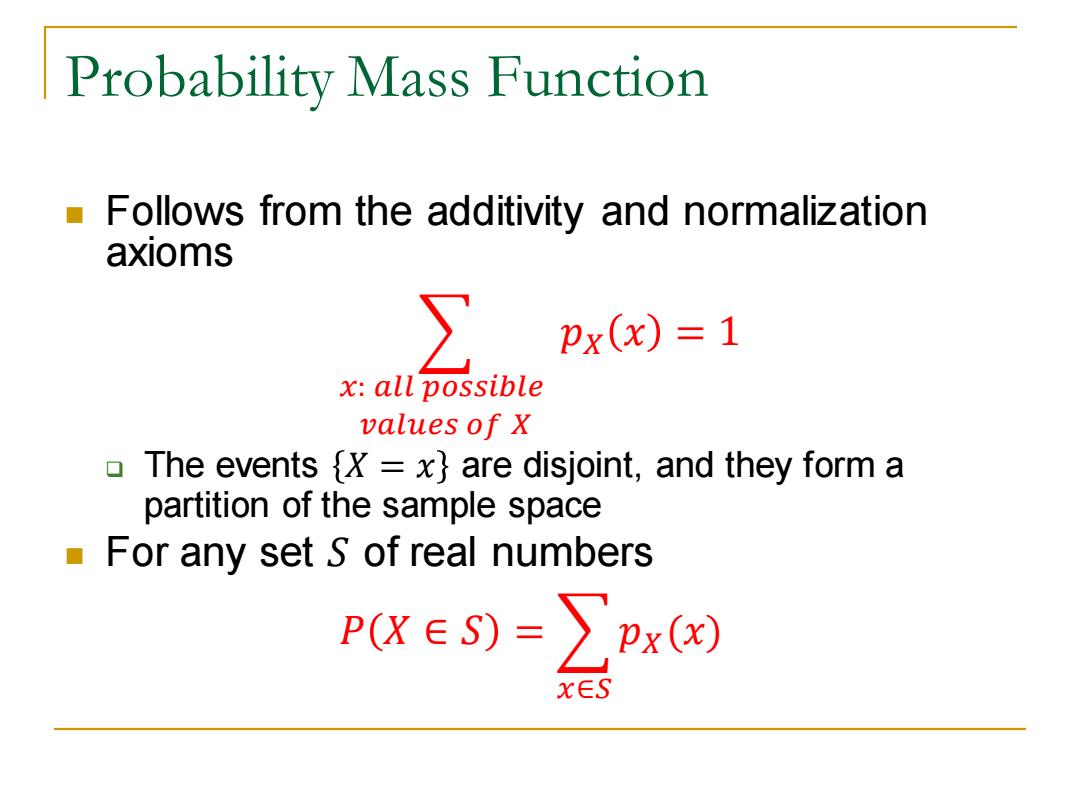
Content Basic Concepts Probability Mass Function Functions of Random variables Expectation,Mean,and Variance Joint PMFs of Multiple Random Variables Conditioning Independence
Content ◼ Basic Concepts ◼ Probability Mass Function ◼ Functions of Random Variables ◼ Expectation, Mean, and Variance ◼ Joint PMFs of Multiple Random Variables ◼ Conditioning ◼ Independence

Probability Mass Function For a discrete random variable X.the probability mass function (PMF)of X captures the probabilities of the values that it can take. If x is any possible value of X,the probability mass of x,denoted px(x),is the probability of the event =x}consisting of all outcomes that give rise to a value of x equal to x: px(x)=P(X=x)
Probability Mass Function ◼ For a discrete random variable 𝑋, the probability mass function (PMF) of 𝑋 captures the probabilities of the values that it can take. ◼ If 𝑥 is any possible value of 𝑋, the probability mass of 𝑥, denoted 𝑝𝑋(𝑥), is the probability of the event 𝑋 = 𝑥 consisting of all outcomes that give rise to a value of 𝑋 equal to 𝑥 : 𝑝𝑋 𝑥 = 𝑃 𝑋 = 𝑥

Example Two independent tosses of a fair coin X:the number of heads obtained ■The PMF of X is 1/4 ifx=0orx=2 px(x)=了1/2 ifx=1 (0 otherwise
Example ◼ Two independent tosses of a fair coin ◼ 𝑋: the number of heads obtained ◼ The PMF of 𝑋 is 𝑝𝑋 𝑥 = ቐ 1/4 if 𝑥 = 0 or 𝑥 = 2 1/2 if 𝑥 = 1 0 otherwise

Probability Mass Function Upper case characters to denote random variables ▣X,Y,Z, Lower case characters to denote real numbers 口X,y,Z,… the numerical values of a random variable n We'll write P(=x)in place of the notation P({X=x). Similarly,we'll write P(XE S)for the probability that X takes a value within a set S
Probability Mass Function ◼ Upper case characters to denote random variables ❑ 𝑋, 𝑌, 𝑍, … ◼ Lower case characters to denote real numbers ❑ 𝑥, 𝑦, 𝑧, … ❑ the numerical values of a random variable ◼ We’ll write 𝑃(𝑋 = 𝑥) in place of the notation 𝑃( 𝑋 = 𝑥 ). ◼ Similarly, we’ll write 𝑃 𝑋 ∈ 𝑆 for the probability that 𝑋 takes a value within a set 𝑆

Probability Mass Function Follows from the additivity and normalization axioms px(x)=1 x:all possible values of X The events =x}are disjoint,and they form a partition of the sample space For any set S of real numbers PXES)=〉px() X∈S
Probability Mass Function ◼ Follows from the additivity and normalization axioms 𝑥: 𝑎𝑙𝑙 𝑝𝑜𝑠𝑠𝑖𝑏𝑙𝑒 𝑣𝑎𝑙𝑢𝑒𝑠 𝑜𝑓 𝑋 𝑝𝑋 𝑥 = 1 ❑ The events 𝑋 = 𝑥 are disjoint, and they form a partition of the sample space ◼ For any set 𝑆 of real numbers 𝑃 𝑋 ∈ 𝑆 = 𝑥∈𝑆 𝑝𝑋(𝑥)